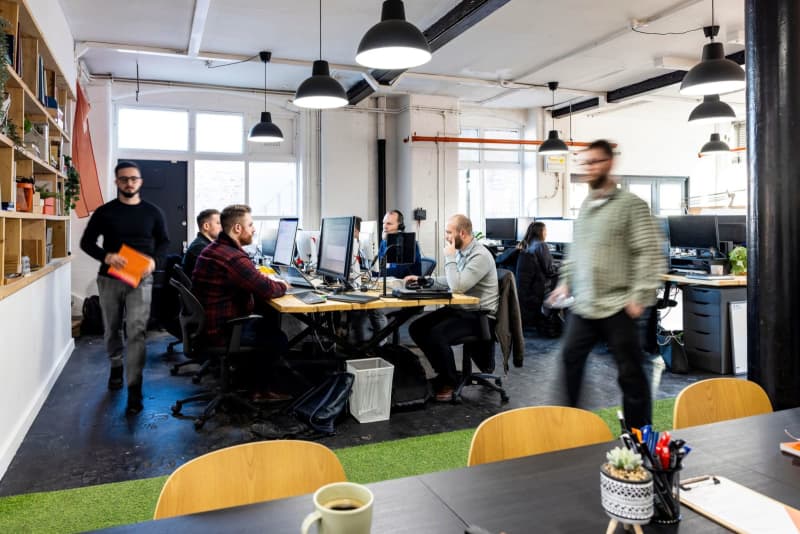
With more and more employees opting to work from home when given the opportunity, it may make sense for a company to cut down on office space and introduce desk sharing.
Of course that doesn’t always go down well with people used to having their workstation to themselves. We’ve spoken to two experts about what it takes to make desk sharing work.
Planning is key
Jutta Rump, a professor at the Institute for Employment and Employability in southern Germany, says it’s worth thinking about desk sharing when employees work remotely at least two days a week.
This creates empty spaces that aren’t inviting for those who come into the office on a regular basis. In addition, it’s uneconomical to keep desks available, says Dennis Stolze, head of the Cognitive Environments team at Germany’s Fraunhofer Institute.
Using desk sharing merely as an excuse to save space or to simply give the office a new look, on the other hand, is “the biggest stumbling block,” he says.
For desk sharing to be implemented successfully, you need to offer variety, says Stolze. “When you’re at home, you don’t always sit at a desk, but just use whatever is available and what fits the task,” he explains.
Before implementing the new system, Stolze recommends to set up a planning committee that also includes employees and the works council, if the company has one, to figure out what kind of setup is needed.
On the employer side, it’s important to have a vision for the future. “A project like this needs to be well monitored and evaluated,” says Rump. Her advice is to “calculate how much space is needed and to keep in mind that you’ll need to plan for days when everyone is in the office.”
Test with a team
Stolze and Rump advise testing the concept as a pilot project in one department or team. Rump suggests to choose a team that works well together and let them try out desk sharing for six months, to learn from their experience. It should be clearly communicated that the concept will be rolled out to the whole company. Visualizing the new setup by using augmented reality can also help employees to get on board, says Stolze.
According to the expert, the rooms that remain will need to “pop”. “Get creative with the interior design.” For the project to be successful, it’s important that the team lead also shares their desk, says Rump.
Plan for cupboards and lockers
Despite the involvement of employees, it’s unlikely that everyone is happy with the new arrangement from the start. Losing your usual desk creates fear and unease, and sometimes leads to rejection, says Stolze.
“Many people decorate their desks with a photo and a plant, it’s like an extension of their home, often including a lot of the clutter too,” says Rump. But if you’re sharing a desk with others, you should make sure to leave it tidy at the end of the day. This is something that many perceive as an additional burden at first.
Setting up small cupboards or lockers for people to store their personal belongings can help, according to the professor.
A booking system makes things easier
So, in the future will everyone be looking for a free desk first thing in the morning? Not at all, say the experts. They recommend introducing a booking system that doesn’t allow people to book too far in advance. “Otherwise you get people who book months ahead,” says Rump.
Her advice is to set up team areas on one floor, instead of distributing desk sharing across the entire building.
Whether it bothers you if the person at the desk next to you keeps changing is a question of personality. “Having a favourite desk is not forbidden,” says Stolze. Both experts agree that exchange with colleagues promotes creativity. If you really want to keep your own desk, you’ll have to discuss this with your employer.
EMEA Tribune is not involved in this news article, it is taken from our partners and or from the News Agencies. Copyright and Credit go to the News Agencies, email news@emeatribune.com Follow our WhatsApp verified Channel





